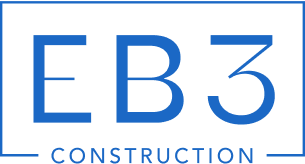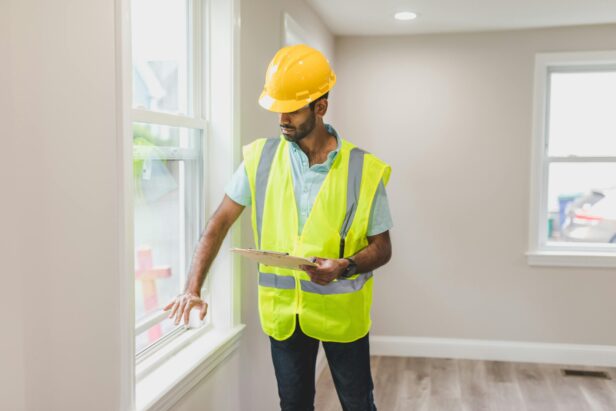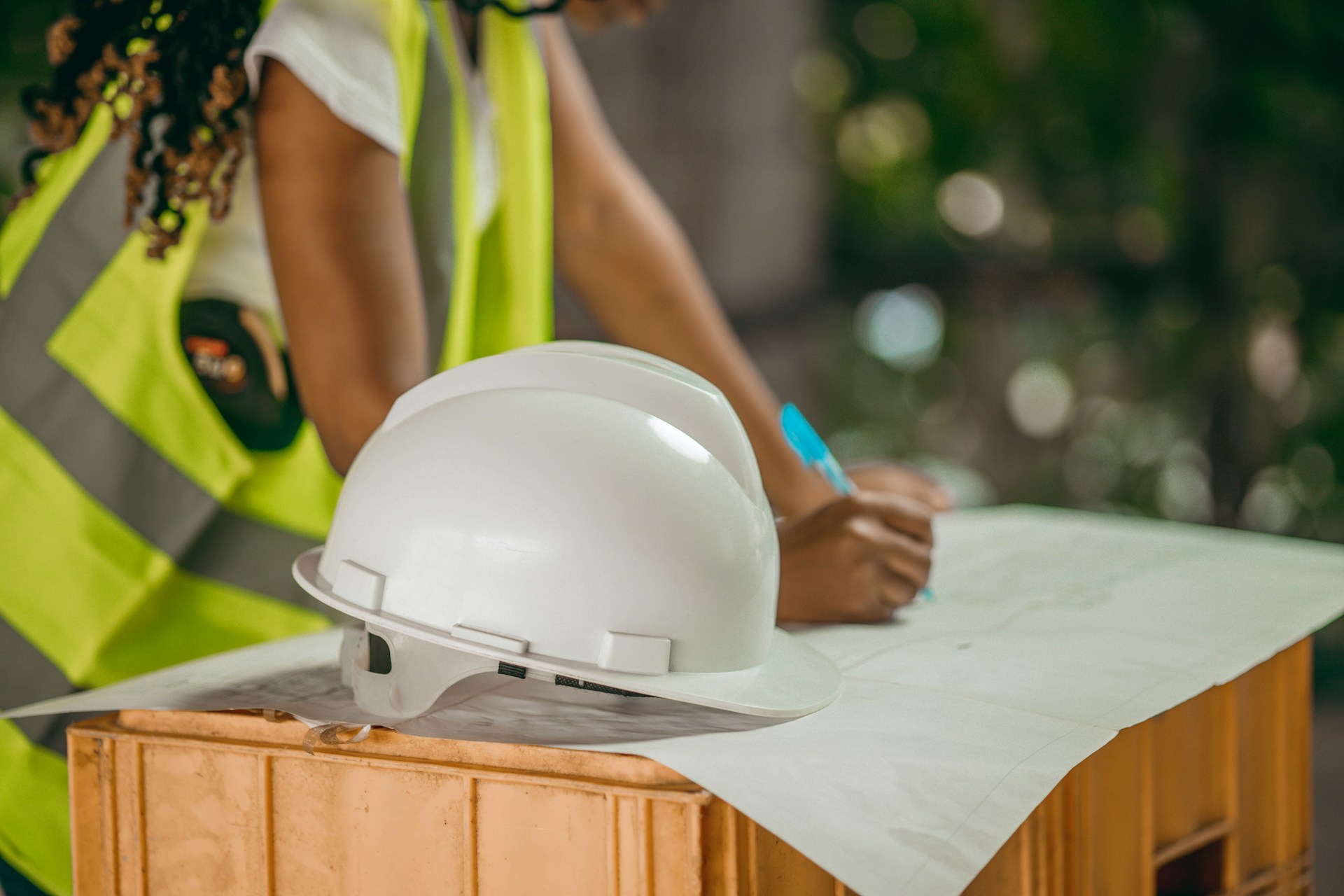A single missing manual can turn a property owner’s first day into a crisis. When we hand over keys to a completed building, the real test begins. Post-construction support services bridge the critical gap between construction completion and confident ownership.
These services encompass the systematic transition from active construction to full operational readiness. We coordinate final inspections, complete documentation transfers, provide owner training, and establish clear warranty protocols that protect both the building’s performance and the owner’s investment for years ahead.
What Tasks Typically Make Up Post-Construction Support Services?

Post-construction support services break down into specific tasks that ensure project completion and smooth turnover. We organize these activities around three phases: verification and completion, documentation and handover, and ongoing support setup.
The verification phase centers on final inspections and walkthroughs to confirm all systems meet contract specifications. These inspections verify that mechanical, electrical, and plumbing systems function as designed while identifying any remaining defects or incomplete work.
Punch list completion forms the bridge between construction and closeout. We address every item on the list before releasing final payments, ensuring that minor fixes, touch-ups, and corrections meet project standards. This process protects both the contractor’s payment schedule and the owner’s investment quality.
The handoff and turnover phase transfers critical project materials to the owner. This includes as-built drawings that reflect actual construction conditions, operations and maintenance manuals for all building systems, keys and access credentials, and comprehensive training for facility staff on building operations and safety protocols.
Documentation tasks create the paper trail that supports ongoing building management. We prepare notices of completion, compile inspection reports, organize warranty letters from manufacturers and subcontractors, and process the release of liens to clear the property title.
Readiness items prepare the building for occupancy. Post-construction cleaning removes all construction debris and dust while ensuring interior spaces meet occupancy standards. Where required, we coordinate with local authorities to secure the certificate of occupancy that permits building use.
Training and transition activities equip owner teams with the knowledge needed to operate building systems safely and efficiently. We conduct sessions on HVAC controls, fire safety systems, emergency procedures, and routine maintenance requirements tailored to the facility’s specific equipment and layout.
Building operations and maintenance setup establishes the foundation for long-term facility management. This includes scheduling regular inspections, creating maintenance schedules based on manufacturer recommendations, and implementing proactive issue management systems that prevent small problems from becoming major failures.
Post-occupancy evaluation confirms that the completed building performs as intended. We assess comfort levels, energy performance against design targets, and overall functionality during initial operation periods. This evaluation identifies any adjustments needed to optimize building performance.
Seasonal testing validates system performance under varying conditions. HVAC systems undergo testing in both summer and winter conditions to ensure proper heating and cooling capacity. We conduct a final review after the building has operated through complete seasonal cycles.
Environmental certification tasks support green building credentials when applicable. This includes compiling documentation for LEED or BREEAM certification, organizing energy performance data, and coordinating with third-party commissioning agents to verify sustainable building features meet certification requirements.
How Should Builders Structure Support For Quality, Speed, And Clarity?
Effective post-construction support requires systematic organization. We structure our approach around seven core principles that drive quality outcomes while maintaining rapid response times.
Responsiveness That Sets The Standard
Quick, knowledgeable replies form the foundation of client satisfaction. Our support team responds to inquiries within established timeframes, typically 24 hours for non-urgent matters and same-day for critical defects. Each response includes actionable information rather than generic acknowledgments.
We maintain dedicated contact channels that connect property owners directly to technical staff who understand the specific building systems and construction methods used in their project. This eliminates the frustration of explaining issues multiple times to different people.
Warranty Clarity And Process Transparency
Accessible warranty coverage eliminates confusion about what protection owners actually have. We provide clear documentation that outlines exactly what systems, components, and workmanship are covered, along with specific timeframes for each category. The claims process follows transparent steps with defined timelines for assessment, approval, and resolution.
Property owners receive warranty certificates that specify coverage terms in plain language. We establish straightforward procedures for filing claims, including required documentation and expected response timeframes. This transparency builds confidence and prevents disputes over coverage interpretations.
Systematic Defect Management
Clear steps govern how we handle defects from identification through final resolution. Our process prioritizes safety concerns immediately while addressing cosmetic issues according to predetermined schedules. Each defect receives precise diagnosis before we implement targeted fixes using appropriate materials and methods.
We document all defect reports with photos, measurements, and detailed descriptions. This creates a comprehensive record that supports quality assurance and helps identify patterns that might indicate broader issues requiring attention.
Structured Follow-Up Services
Availability for closing remaining punch list items ensures projects reach true completion. We schedule systematic reviews to verify that all outstanding items receive proper attention and meet specification requirements. Our team remains accessible for maintenance questions that arise during early occupancy periods.
Follow-up services include scheduled check-ins at 30, 60, and 90-day intervals after substantial completion. These touchpoints allow us to address any operational questions and verify that building systems perform as intended under actual use conditions.
Defined Communication Channels
Structured communication eliminates confusion about how and when to reach our support team. We establish specific channels for different types of requests: urgent safety issues, warranty claims, maintenance questions, and general inquiries. Each channel connects to appropriate staff members with relevant expertise.
Realistic expectations accompany every communication protocol. Property owners understand typical response times, what information to provide with requests, and how different types of issues are prioritized and resolved.
Process Discipline And Workflow Management
A structured workflow ensures consistent handling of maintenance and warranty cases. We use standardized procedures that track each request from initial report through final resolution. This systematic approach prevents items from falling through cracks while maintaining quality standards throughout the support process.
Our workflow includes regular review points where supervisors verify that cases progress appropriately and meet established quality benchmarks. This oversight maintains consistent service levels across all support activities.
Trained Staff And Information Systems
Capable support staff understand both construction methods and building information systems that aid maintenance planning. Our team receives ongoing training in new technologies, materials, and maintenance procedures that affect building performance. We maintain comprehensive project records that support accurate diagnosis and efficient problem resolution.
Building information modeling and detailed as-built documentation help our staff quickly understand system configurations and identify optimal repair approaches. This technical capability reduces diagnostic time while improving repair accuracy and longevity.
How Can Owners Evaluate A Builder’s Post-Construction Support System?

Evaluating a builder’s post-construction support system requires systematic due diligence across multiple dimensions. Property owners need specific verification methods to gauge reliability, quality, and long-term value.
Track Record And Client Feedback
Review past projects to understand how builders manage post-construction phases. Request references from recent clients, specifically asking about response times, defect resolution, and overall satisfaction with support services.
Examine how teams use project management software to streamline communication and mitigate risk. Builders who leverage technology for coordination typically provide more efficient support. Look for evidence of structured workflows and documented processes.
Assess client feedback regarding specification compliance and how well builders addressed post-occupancy issues. A pattern of positive testimonials indicates consistent support quality.
Support Terms And Coverage
Confirm what systems, finishes, and subcontractor corrections fall under post-construction support agreements. Understanding coverage limits prevents disputes when issues arise. Verify duration of support services and what triggers extended coverage.
Review warranty terms for mechanical systems, structural components, and finish materials. Clear documentation of responsibilities helps owners understand when to contact the builder versus handling issues independently.
Examine how change orders and amendments affect support coverage. Builders should clearly communicate how modifications impact ongoing support obligations.
Accessibility And Response Protocols
Verify contact paths for different types of inquiries. Support teams should provide direct lines for urgent defects versus routine maintenance questions. Response times to technical and specification questions demonstrate commitment to client care.
Assess support availability during critical inspection periods. Builders who provide on-site assistance during punch list walkthroughs and regulatory inspections show dedication to project completion.
Test communication channels before project completion. Responsive builders answer questions promptly and provide knowledgeable guidance throughout the evaluation process.
Logistics And Documentation Delivery
Ask how pricing for additional support services is communicated. Transparent cost structures prevent unexpected charges and enable informed decisions about extended coverage.
Understand how documentation is organized and delivered. We maintain comprehensive records including as-built drawings, warranties, and maintenance schedules. Efficient document management supports long-term building operations.
Evaluate amendment handling processes. Changes to support agreements should follow clear procedures with documented approvals and updated terms.
Maintenance Scope And Preventive Measures
Understand inspection frequency for different building systems. HVAC and plumbing require regular attention, and builders should outline servicing schedules and responsibilities.
Review preventive maintenance measures included in support packages. Proactive care extends building life and prevents costly emergency repairs. Quality builders identify potential issues before they escalate.
Assess risk management approaches for ongoing building operations. Builders who use building information modeling and systematic maintenance tracking provide superior long-term support.
Cost-Benefit Analysis
Weigh extended support plans against potential repair costs over time. Calculate the value of preventive maintenance versus reactive fixes. Quality support often reduces total ownership costs through early problem identification.
Compare support offerings from multiple builders. Extended coverage that prevents major system failures typically provides positive returns on investment.
Consider how support plans align with building complexity and use patterns. High-traffic facilities may benefit more from comprehensive support than simpler structures.
What Challenges Appear After Construction, And How Are They Mitigated?
Post-construction issues can damage relationships and create costly headaches when not handled properly. Service delays frustrate owners who expected prompt responses to their concerns. Miscommunications lead to incorrect repairs or wasted time addressing the wrong problems. Low-quality fixes force repeated visits and erode trust in the construction team’s capabilities.
We prevent service delays by establishing structured support processes with clear checklists that define response timeframes and required actions. Each support request gets logged immediately with specific deadlines for acknowledgment and resolution. This systematic approach eliminates confusion about who handles what and when responses are due.
Risk management software coordinates logistics and reduces errors by tracking all service requests in a centralized database. The system automatically assigns tasks to appropriate team members and sends alerts when deadlines approach. Digital documentation ensures nothing falls through administrative gaps that often cause delays in traditional paper-based systems.
Regular communication aligns expectations between owners and our support team. We provide realistic timelines for different types of issues and explain what resources are needed for proper resolution. Weekly status updates keep owners informed about progress on complex repairs that require multiple visits or specialized parts.
Timely and precise repairs eliminate the need for return visits that frustrate owners and increase costs. Our technicians carry comprehensive inventories of common replacement parts and use proper installation techniques from the start. Quality control inspections verify that repairs meet original construction specifications before considering work complete.
On-site concerns receive immediate attention through direct communication channels that bypass lengthy approval processes. Field supervisors have authority to address safety issues and minor defects without waiting for office authorization. This rapid response capability maintains owner confidence and prevents small problems from becoming major defects.
Warranty matters get resolved promptly through predefined escalation procedures that involve manufacturers when necessary. We maintain detailed records of all warranty claims and coordinate directly with product suppliers to expedite replacements or repairs. Clear documentation of warranty terms prevents disputes and ensures owners receive the coverage they purchased.
Conclusion And Next Steps

Post-construction support services form the bridge between project completion and long-term building success. We recognize that effective support encompasses final inspections, punch list resolution, comprehensive documentation transfer, owner training programs, warranty management, operations and maintenance setup, post-occupancy evaluations, and seasonal system testing. These elements work together to protect both building performance and owner confidence throughout the critical transition period and beyond.
The foundation for successful post-construction support begins during contract development and continues through structured implementation. Property owners should establish clear support scope and warranty terms within initial agreements, define specific communication channels with realistic response timeframes, plan comprehensive owner training sessions alongside complete handover documentation packages, schedule both post-occupancy evaluations and seasonal system checks, and carefully evaluate the cost-benefit ratio of extended maintenance plans against potential major repair expenses over the building’s operational lifespan.
Ready to establish comprehensive post-construction support for your next project? Contact EB3 Construction to discuss how we structure our support services to protect your investment.




